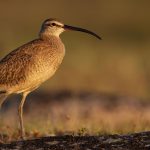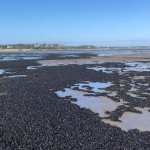Conservation work should prioritize increasing beef production and also boosting habitat for migratory birds
By Joaquín Aldabe, Nicolas Marchand and Santiago Medina
Grasslands represent approximately 50 percent of the Earth᾽s surface and provide fundamental ecosystem services for the maintenance of life on the planet. It is estimated that some 500 million people depend directly on grasslands for agriculture and their way of life. The United Nations General Assembly agrees: on March 15, 2022, in recognition of the importance that grasslands have for humanity and wildlife, and the increasing threats facing grasslands, it declared that 2026 will be the International Year of Rangelands and Pastoralists.
Shorebirds and many other species also depend on these habitats for survival. Recent studies on ranchlands within the system of coastal lagoons in eastern Uruguay have confirmed the importance of these grassland ecosystems, and the need for specific management protocols to guarantee improved livestock production as well as the availability of habitat for shorebirds that rest and forage upon grasslands.
Several species of shorebirds use grasslands located on (mostly privately-owned) lands dedicated to livestock production along their migration route and in their non-breeding areas. Grasslands dedicated to cattle-ranching are widely used by many species of shorebirds including Buff-breasted Sandpiper (Calidris subruficollis), American Golden-Plover (Pluvialis dominica), Upland Sandpiper (Bartramia longicauda), and Pectoral Sandpiper (C. melanotos), amongst others. Habitat management strategies that prioritize both conservation and production are key for ensuring grasslands provide the resources and conditions that many shorebirds depend on throughout their life cycle.
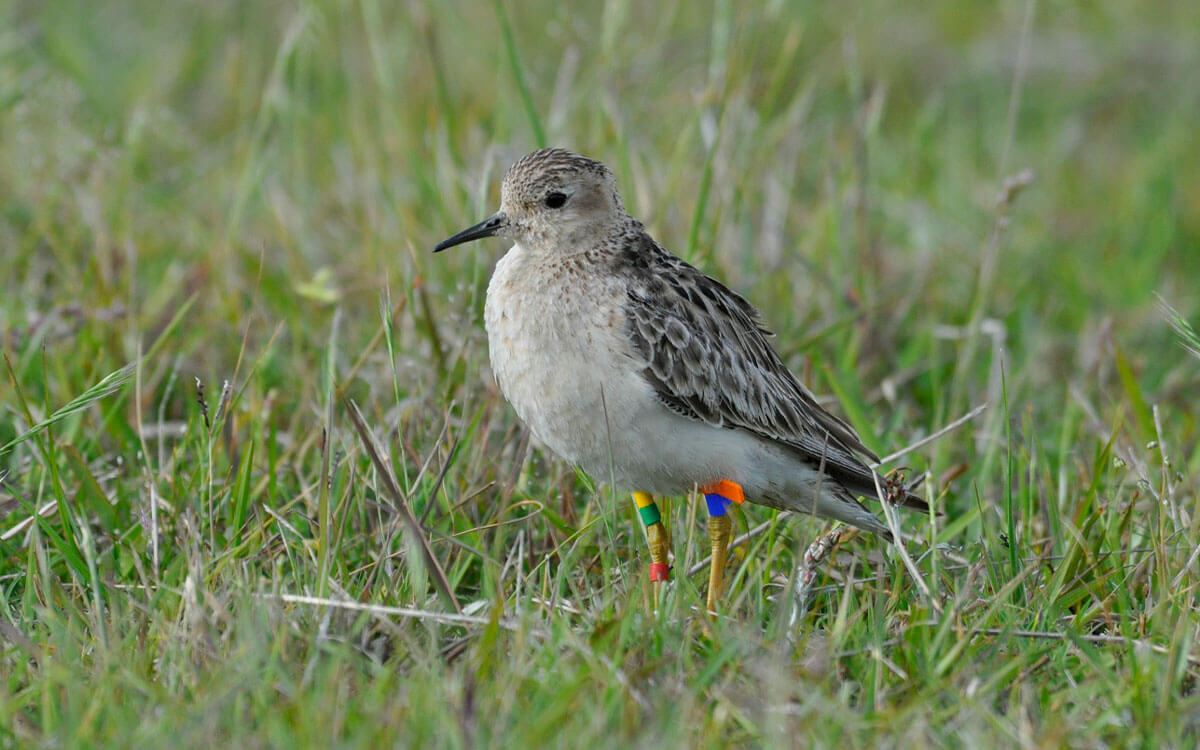
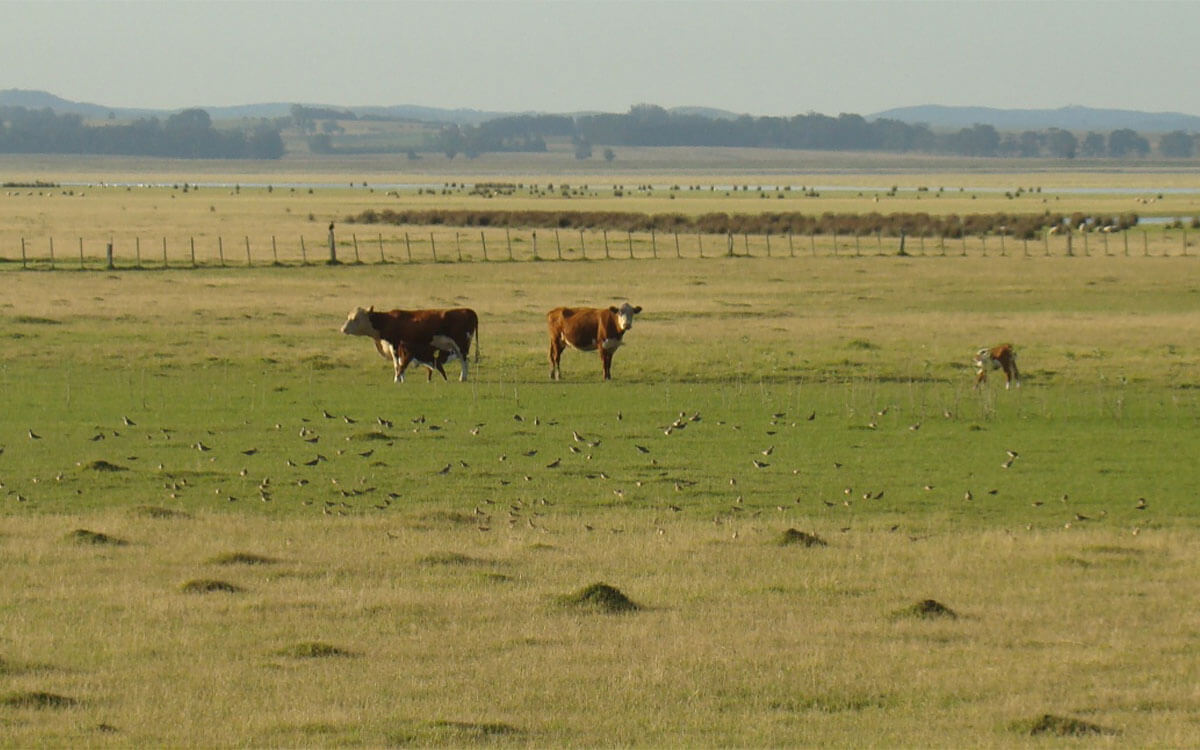
Left: Banded Buff-breasted Sandpiper. Right: Shorebirds and cattle share ecosystems at WHSRN Site Laguna de Rocha in Uruguay. Photos: Joaquín Aldabe.
Between September 2021 and March 2022, livestock management techniques were evaluated in the area around Laguna de Castillos, which forms part of a system of coastal lagoons in eastern Uruguay and offers important grassland habitat for shorebirds. However, during the last spring and summer seasons of the Southern Hemisphere, the grass was found to be higher than usual in the typically widely used by shorebirds. Seasonal weather patterns tend to be very variable from year to year, making it difficult for producers to predict how abundant vegetation might be. Thanks to an unusually favorable spring climate, grass grew faster than cattle could graze; ranchers did not plan for enough cows to fully exploit the available fodder.
Surveyors only noted seeing small numbers of Buff-breasted Sandpiper, a key species for the area. Using the Distance Sampling Method to estimate abundance, a total of 600 individuals was estimated to be present in an area of 2,500 hectares. This number is low compared to the densities typically recorded at other sites that shorebirds migrate to during the North American winter season.
These studies at Laguna de Castillos confirm the need to facilitate specific management practices during years with high vegetation growth; where grasslands over-produce vegetation that cannot be consumed by livestock, the excess grass is lost for production purposes and also restricts the ability for shorebirds to use the habitat for foraging and nesting.
In a workshop held with producers, farm information was collected and a consensus was reached on how to plan and implement good habitat management practices. Participants proposed alternative strategies to improve the use of grassland, both in terms of increasing the number of kilos of meat and the available habitat for shorebirds. The activity proved to be fundamental for the understanding of the issues and for the formation of a joint search for effective alternatives. It also highlighted the interest among the producers for receiving proposals to improve their planning and production, as well as ensuring the continuation of adequate habitat for the shorebirds.
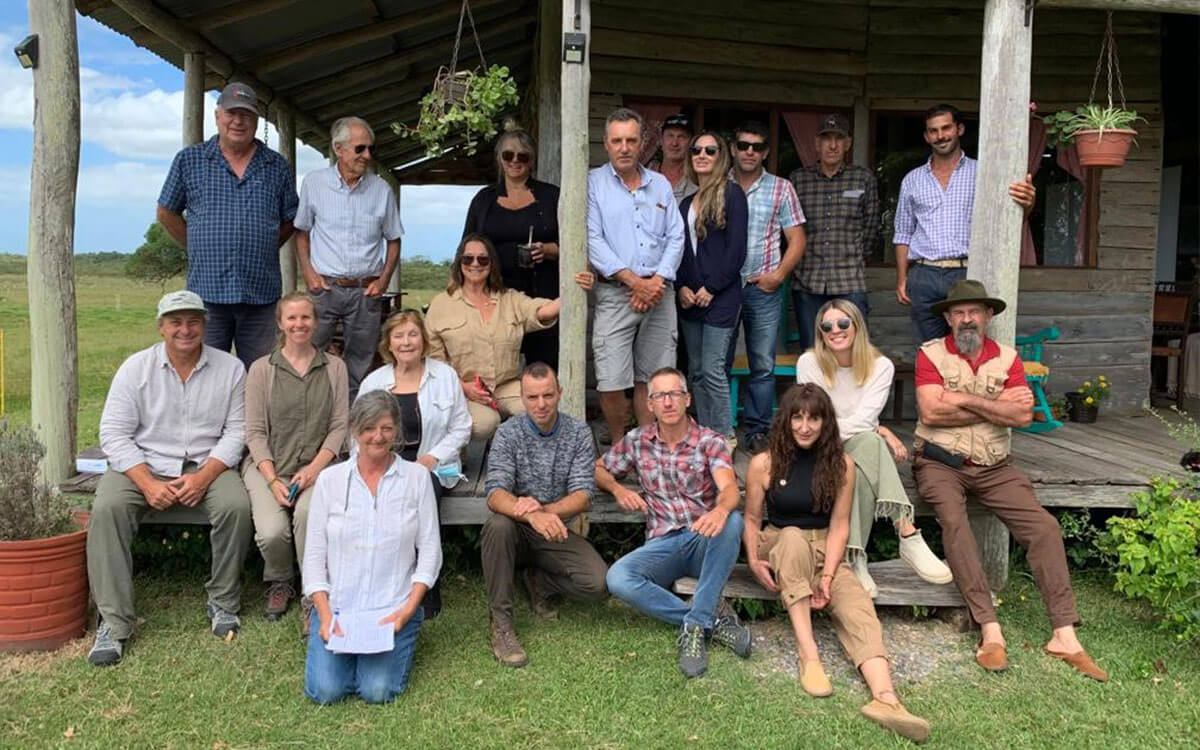
Workshop with producers in the “La Barra Grande” establishment at Laguna Castillos – March 12, 2022
It is important to highlight that these experiences support the need for “property-specific” management. As a result, the effectiveness of proposed designs depends not only on the will of the producers to take action, but also on the realities and specific needs of each unique situation.
To achieve improvements in the management of the sites, it is important to facilitate the connection between the producers with initiatives that are current, relevant, and promoted by diverse national agricultural organizations that develop technological processes, training, and tools for the sustainable management of natural resources.
One of these initiatives is the Pasture Management Project (Proyecto Gestión del Pasto) headed by the Agricultural Plan Institute (Instituto Plan Agropecuario – IPA) and financed by the National Institute for Agricultural Research (Instituto Nacional de Investigación Agropecuaria – INIA). This effort seeks to understand how producers manage their grass and how this translates into the observed productive, economic, and environmental results. To do this, they use 33 properties (“Living Laboratories”) across the national territory to gather the knowledge of the producers, and to favor cross-learning experiences between producers.
With the support of Manomet, the Fundación Amigos de las Lagunas Costeras (Friends of the Coastal Lagoons Foundation) has entered into a cooperation agreement with the Agricultural Plan Institute, incorporating a new Living Laboratory to the national project at Laguna de Rocha. The intention is to add four more laboratories at each of the other coastal lagoons (Merín, Castillos, Garzón and Jose Ignacio) to serve as a reference for producers in each of these sites, as the production contexts and situations are different at each of them.
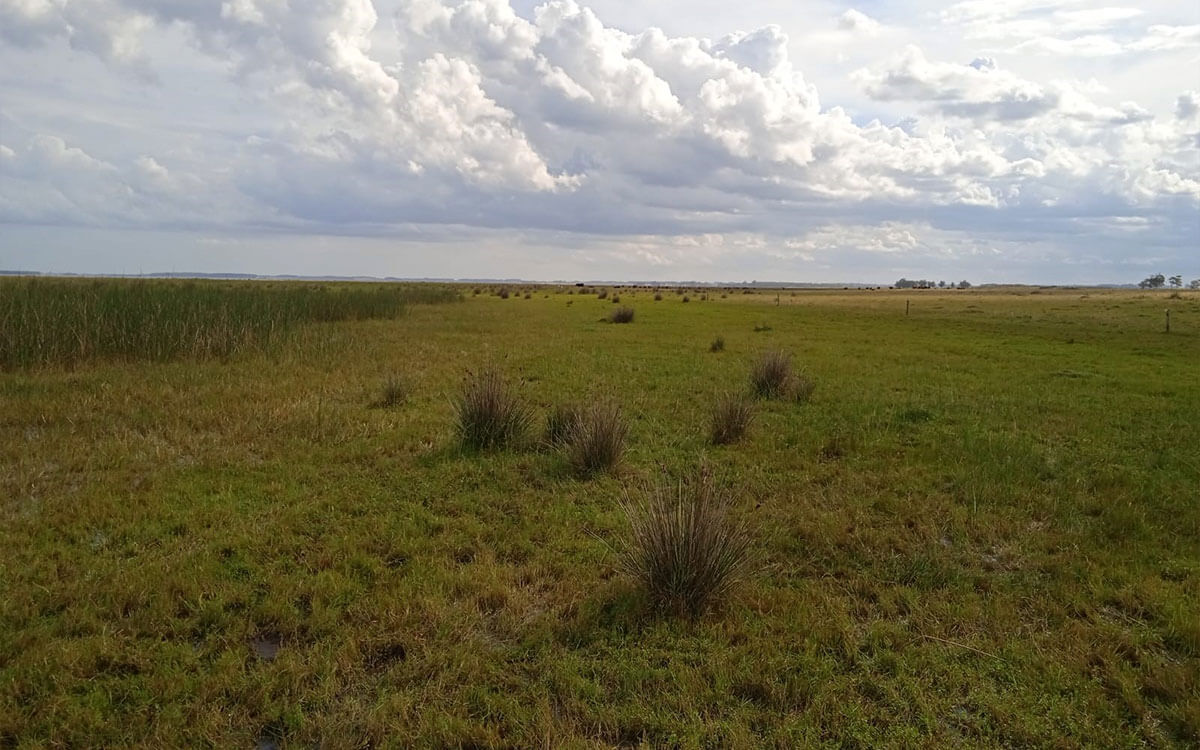
The “Living Laboratory (Laboratorio Viviente)” at Laguna de Rocha
The work at Laguna de Castillos was carried out within the framework of the NMBCA Project (USFWS) implemented by the Fundación Amigos de las Lagunas Costeras and the Centro Universitario Regional del Este.
For more information about cattle ranching and shorebird conservation please contact Joaquín Aldabe or Nicolas Marchand.
Cover Photo: Group of Buff-breasted Sandpiper. Photo: Joaquín Aldabe.





